Silica gel packets are small packets or pouches filled with silica gel beads. Silica is a naturally occurring mineral composed of silicon and oxygen. When made into gel bead packets, silica absorbs moisture in long term freeze dried food storage, or other bulk dry foods.
What is silica Gel Used For? Silica gel beads are a desiccant. The Silica absorbs and holds water vapor. Adding silica packs to packaging helps control moisture levels and prevents the damage caused by moisture. Silica packets are commonly used in a wide range of packaged products to absorb moisture. Silica has other uses as well, for example, bulk silica is used in silica gel flower drying.
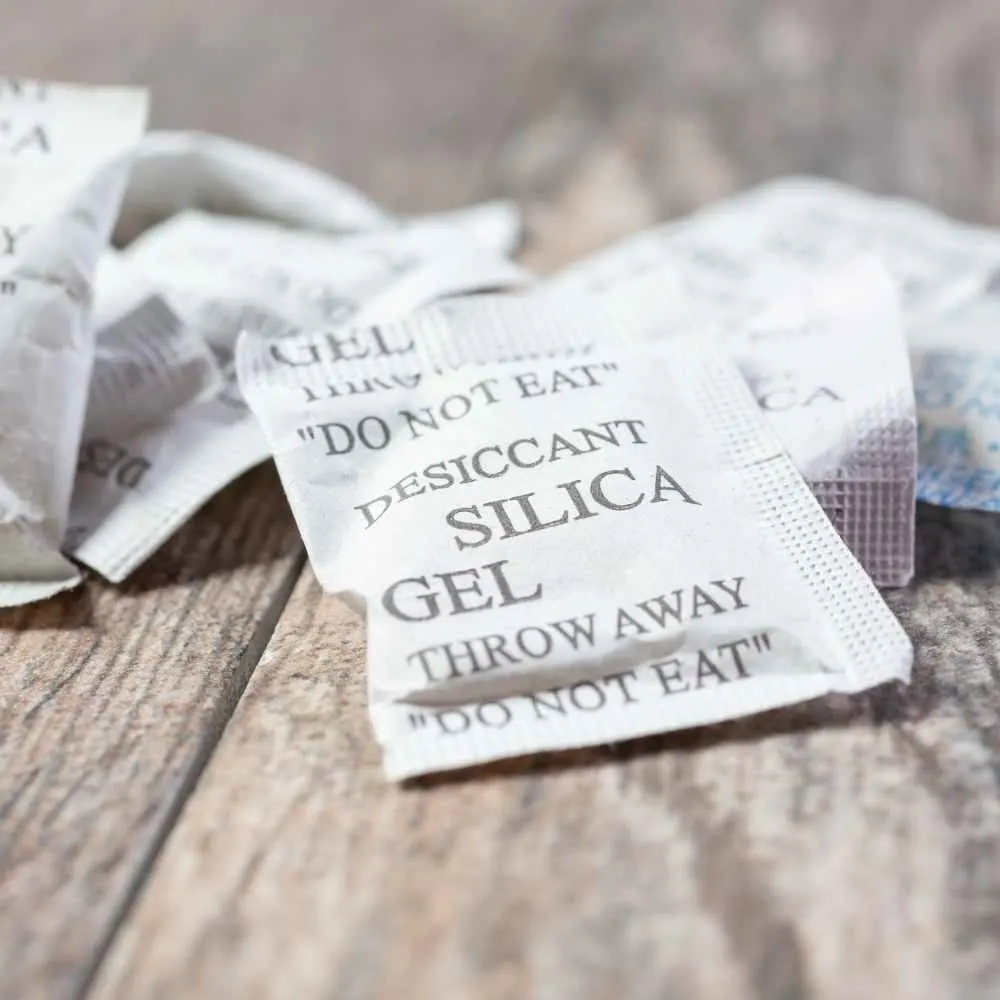
Desiccant Silica gel packets are widely used in the food industry to control moisture in packaged foods. We also see them used in long-term food storage, such as with dehydrated or freeze-dried foods, to prevent spoilage and maintain product quality.
Silica Gel Beads In Long Term Food Preservation.
When used with mylar bags and oxygen absorbers, silica gel packets contribute to creating an optimal storage environment for long-term food preservation. Mylar bags provide a barrier to light and oxygen, while oxygen absorbers remove residual oxygen, and silica gel packets control humidity.
While the Mylar bags themselves create a barrier against external moisture, using silica gel packets inside the bags will absorb moisture where it counts. Especially if you’re dealing with particularly humid conditions.
Conditions That Make Using Both O2 Absorbers and Silica packs together Worthwhile:
For short term freeze dried foods, silica packs are not always needed. The Mylar bags, or even sealed mason jars along with O2 absorbers and proper storage conditions as all thats needed for up to five or ten years. Along with a clear FIFO(first in-first out) system for your stored freeze-dried foods.
However, Here are some conditions that make it worth throwing in a proper number of silica packs to improve the odds of keeping your carefully prepared foods safe long term.
- Extended Storage Periods: When planning for very long-term storage, such as 10 years or more, the use of both desiccants helps ensure the stability of the stored foods over an extended period.
- Fluctuating Storage Conditions: If the storage environment experiences temperature and humidity fluctuations, using both desiccants provides an added layer of protection against changing conditions.
- Mixed Ingredients: When freeze-dried foods contain a mix of ingredients with varying moisture levels, both oxygen absorbers and silica gel help maintain overall stability.
How Many Silica Packs to Use?
As a general guideline use the chart below for the amount of silica gel needed based on the container volume. Keep in mind that these are approximate values, and you may need to adjust based on specific conditions, such as the moisture content of the stored items and the climate. Here’s a simple chart:
| Container Volume | Recommended Silica Gel Amount |
|---|---|
| Up to 1 liter | 20 grams |
| 1 – 3 liters | 30 – 50 grams |
| 3 – 5 liters | 50 – 100 grams |
| 5 – 10 liters | 100 – 200 grams |
| 10 – 20 liters | 200 – 400 grams |
| 20 – 50 liters | 400 – 1000 grams |
| 50 – 100 liters | 1000 – 2000 grams |
These values are just a starting point. Monitor the storage conditions regularly. If you are using silica gel with an indicator, watch for color changes that may indicate the need for rejuvenation or replacement. Adjust the amount of silica gel based on your observations and the specific requirements of your storage situation. This is simple to do if using food grade plastic buckets or mason jars.
Is silica gel safe for humans? Silica gel found in desiccant packets is safe for humans to handle when used as intended. Silica gel is composed of silicon dioxide. It is chemically inert and not known to be toxic. Is it OK to touch silica gel? Yes. if it is clear gel balls, it won’t hurt you.
What Happens If You Eat Silica Gel? The packets often carry warnings such as “Do Not Eat” or “Throw Away, Do Not Eat”. However, Silica gel itself is non-toxic. but it is not considered edible. It is not a food.
If an adult were to eat a few silica gel beads, it is unlikely to cause harm. The primary concern would be the potential choking hazard posed by the small, granular beads since they don’t crush. Eating more beads may lead to a tummy ache in adults. Drink water to flush them out.
For small children and pets silica beads can pose a more significant risk when eaten. Choking is of course more of a hazard for small children and pets. Also, Since silica gel beads do absorb moisture, they can absorb the lubricants in the digestive system and get blocked along the way. Blocked intestines are very dangerous. Seek medical help if your small children or pets ingest even a small package of silica gel.
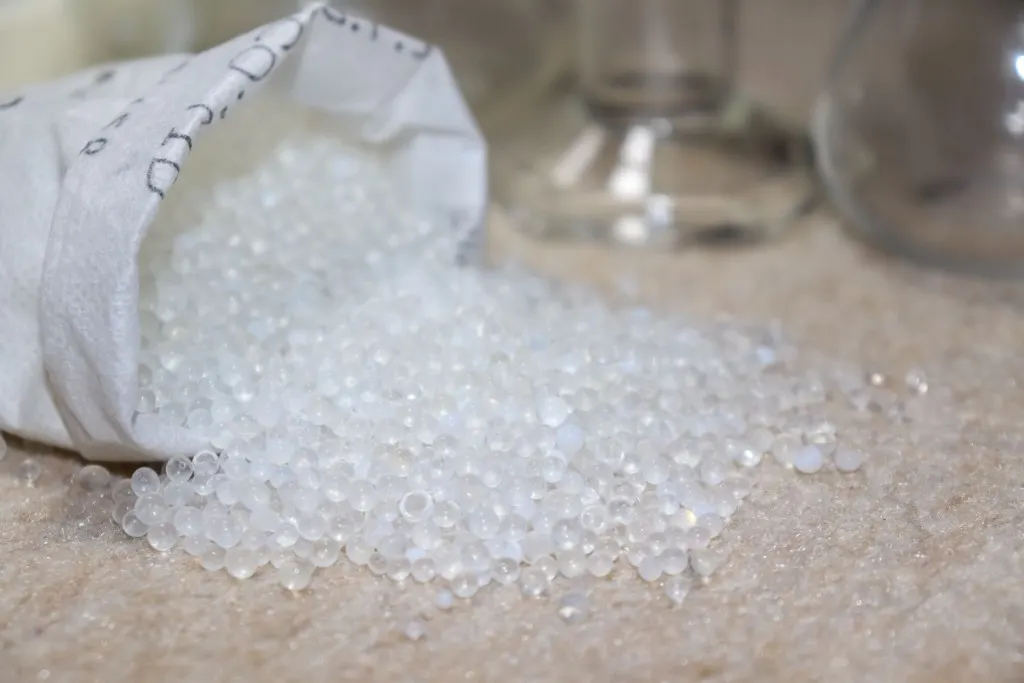
That said, some silica gel packets may contain additives which can be harmful if ingested in significant amounts. Cobalt chloride is a moisture indicator that changes color when the silica gel is saturated with moisture. While the amount of cobalt chloride in these packets is typically small, it’s still a good idea to avoid eating the contents. If it says, don’t eat; Don’t eat it.
Silica gel without a moisture indicator is translucent and clear. And it stays clear, even when fully saturated. Color additives are useful as a convenient way to know when the gel needs to be replaced or recharged.
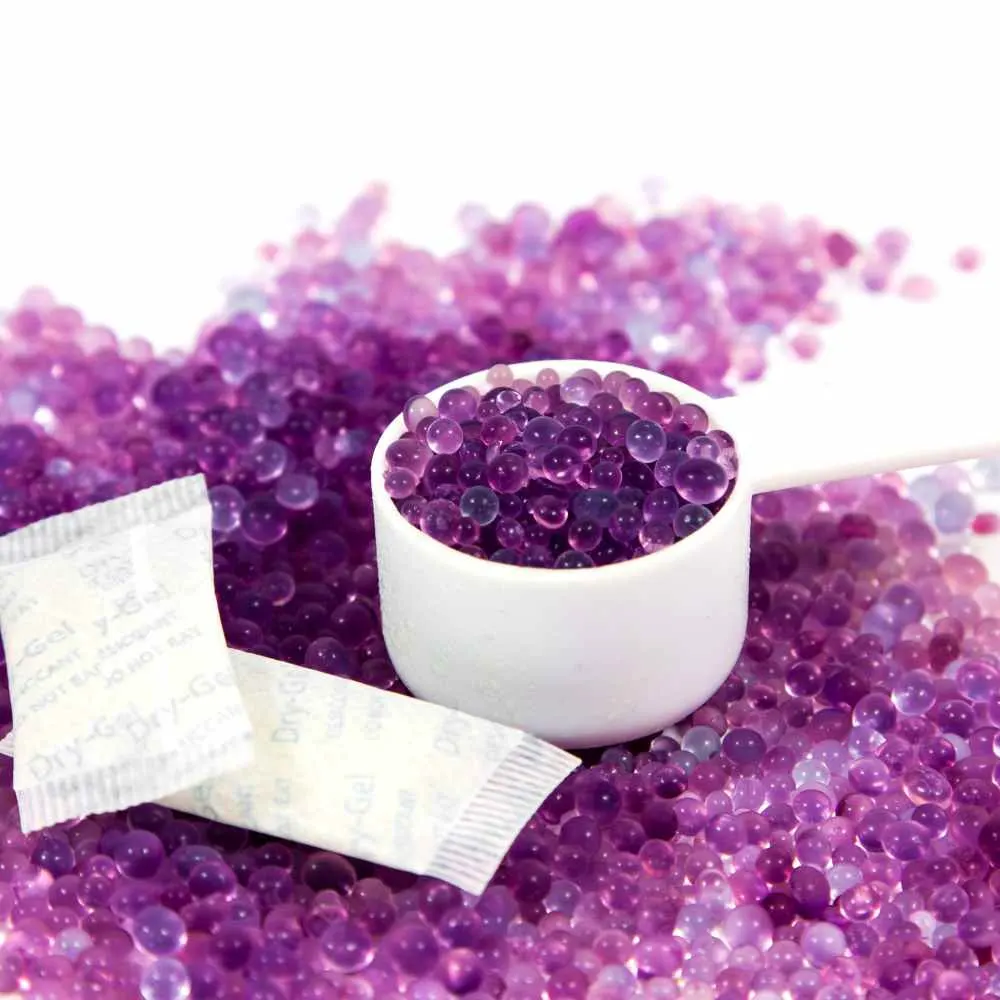
The moisture indicators change color based on the level of moisture saturation in the silica gel. Cobalt chloride is considered hazardous if eaten or if there is prolonged skin contact. Consequently, there has been a shift toward using moisture indicators with lower toxicity, such as methyl violet.
How do you know Which additive is in the Packet? The typical color changes associated with moisture indicators in silica gel are:
- Blue or Blue-Orange (Cobalt Chloride):
- Silica gel with cobalt chloride is often blue when dry. As it absorbs moisture, it changes color to pink or pinkish-orange. This color change serves as a visual indication that the silica gel is saturated with moisture and may need to be replaced or rejuvenated.
- Orange or Yellow (Methyl Violet):
- Silica gel with methyl violet may start as orange or yellow when dry. As it absorbs moisture, it may change color to green or blue. Similar to cobalt chloride indicators, this color change signals the moisture-absorbing capacity of the silica gel.
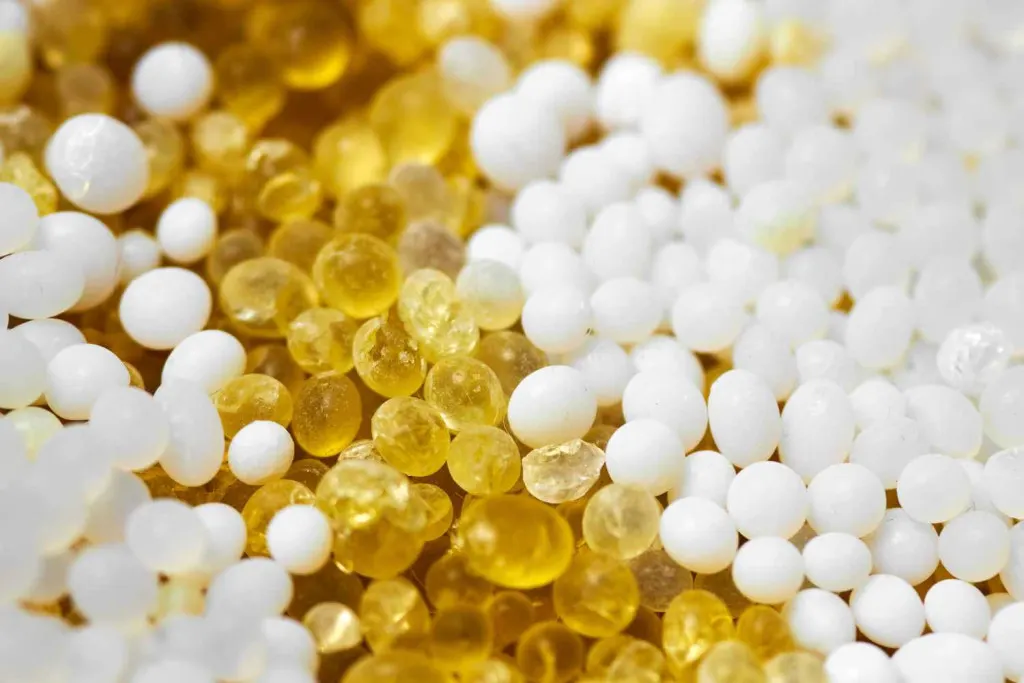
For food storage, it’s smart to use packets without any additives.
Reusing Silica Packets:
Why you should never throw away silica packets. Silica gel and water go together. The gel beads will always absorb water until they are too full. But the great news is, silica is often reusable. If the silica gel packs you have are not colored (indicating the presence of moisture indicators like cobalt chloride), you can rejuvenate them by drying them out in your oven.
The exact time required for recharging the beads will vary based on the size of the gel beads, the degree of moisture saturation, and the specific characteristics of the silica gel product.
Here’s how to recharge Silica Gel beads:
- Preheat the Oven: Preheat your oven to between 200°F (93°C) and 250°F (121°C). This low temperature prevents damage to the silica beads.
- Spread Out Silica Gel evenly on a baking sheet in a thin layer for even drying.
- Bake in the Oven and Monitor the Drying Process: The drying process takes about 1 to 3 hours.
- Stir Occasionally: Stir the silica gel beads occasionally, about every 30 minutes, to ensure even drying. This helps all beads to be exposed to the warm air in the oven.
- Check for Dryness: After 1 to 3 hours, check the silica gel beads for dryness. They should feel dry to the touch and may have regained their original color.
- Cool Before Use: Once the silica gel beads are completely dry, remove them from the oven and allow them to cool before placing them back into storage or use.
If your silica gel packs have a moisture indicator, such as cobalt chloride, best not recharge them for safety reasons.
To store silica packs. Use a Mason jar with a tight fitting lid. Now you’re saving cents! 🙂
Summary:
Silica gel packets are a valuable tool in preserving food by controlling moisture levels. When used correctly and with other appropriate storage methods, they can help extend the shelf life of food products. By minimizing moisture levels within sealed food storage containers, silica gel helps prevent the growth of mold, mildew, and bacteria, which can contribute to spoilage. Additionally, low humidity inhibits chemical reactions that lead to oxidation, preserving the color, flavor, and nutritional content of food.
This is especially true of freeze dried foods intended for long term (up to 25 year) shelf life. Mylar bags provide a barrier to light and oxygen, while oxygen absorbers remove residual oxygen from air in the bag, and silica gel packets control humidity. They make a great team.
Related content:
- Essential Home Freeze Drying Equipment
- Considering A Freeze Dryer for Home Use
- How Does Freeze Drying Work?
- The Complete Guide To Oxygen Absorbers
- Lasagna Gardening
- Five Tips For Pollinator Garden Success
- 2015 Garden and Greenhouse Harvest
Follow Us:
We enjoy meeting you on our social networks. Follow us on Facebook, Pinterest, Instagram . Tag us with your pictures of our recipes and comment on how it went for you. We would love to see what you do with them.
We often like, comment and share your posts of our recipes on our daily Instagram stories.
Ask questions and rate the recipe in the comments section below. Please share what you did with this recipe. We are always looking for more and better ways to make homemade food. Other cooks love your ideas!
Recent Posts:
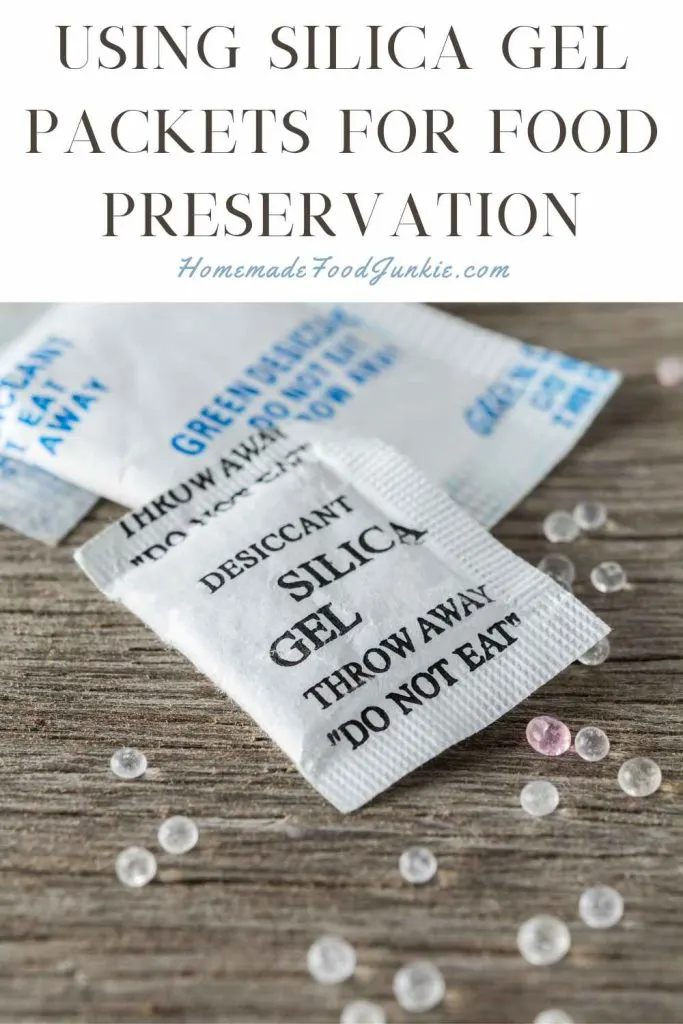

Diane Donnell
Thursday 4th of January 2024
Please, please, PLEASE!! Keep away from children and pets!! Our son’s dog ate some silica cat litter and had to be admitted to the animal hospital for several days. The silica absorbed moisture like it’s supposed to. In this case it absorbed the moisture in the dog’s colon and got stuck. If they couldn’t get the silica to move through his system they’d have to operate. Finally, with several enemas and a doggie version of dulcolax, it moved through his system. It was touch and go for a while. If a child were to swallow the silica it could get stuck in their throat or any other part of their little body. So, please keep away from children and pets!
Diane
Thursday 4th of January 2024
Hello Diane, Thank you so much for emphasizing with your experience that silica gel is not intended to be eaten. I am going to go in and revise this post and let people know it can be dangerous to pets and children as you describe. Thats terrible that your son's pup went through that. I'm so happy he survived without surgery. Thanks again for sharing and Have a wonderful day!